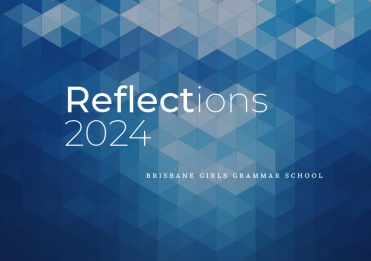The bane of many secondary school mathematics students is the complex unfamiliar problem. As the name suggests, these problems are both complex (requiring knowledge of multiple concepts to complete several steps) and unfamiliar (different to problems already practiced).
To complete such problems, students need a conceptual understanding of, and flexibility with, mathematical techniques. Although they are based on concepts and techniques that students have been studying, their unpredictable nature means that even the best mathematics students find them challenging—particularly in a supervised examination, when panic can sometimes compromise the ability to think clearly and calmly.
It’s tempting to ask why schools include these problems on examinations given the distress they can provoke. The most obvious reason is that they appear on all senior mathematics exams (including all external exams), and the more students practice them throughout Years 7 to 11, the better equipped they will be when it matters most.
At a deeper level though, the ability to face and solve unfamiliar problems is one of the most important skills we need our future generation of professionals to possess, regardless of field. This ability is also the essence of mathematical thinking: mathematics is not only about practicing and mastering rules. Much more importantly, it’s about developing a deep understanding of abstract patterns and structures. Why? So we create new, or adapt existing, rules and procedures to solve problems we haven’t yet encountered.
While students typically understand these reasons, a common response is still ‘Why do you have to make them so hard?’ Of course, we don’t go out of our way to make them difficult. We design problems to be appropriate for the given Year level or course; their very nature is what makes them seem hard, especially when one is under time pressure and without access to any resources. It is not easy to apply appropriate mathematical tools to unfamiliar problems, particularly as students are still building their understanding and mastery of topics. While we hope students develop their skills to progress with these problems, it would be a mistake to think that competence with the complex unfamiliar problem is all that matters.
These problems comprise only 20 per cent of the marks in any exam (including external exams), which means that students can still perform quite well in mathematics, even in the worst-case scenario where little to no progress is made in these questions. We point this out to students not to suggest that attempting these problems is futile, but rather to take the pressure off, so that they perceive such problems more like ‘bonus opportunities’ to demonstrate their skills. This can dramatically reduce student anxiety and support them to think more clearly in the face of the challenge. Although completely solving such problems may be out of reach for some students at a particular point in time, it will often be possible for them to at least make a start and receive partial credit; this should obviously be celebrated when it happens as it indicates progress.
So, how does a student improve their ability to solve these problems (and all the other complex unfamiliar problems the world may throw at them)?
Students will have little chance of making any progress in complex unfamiliar problems unless they have thoroughly mastered key concepts and techniques. Imagine a player attempting a challenging level in a video game without having completed the previous levels. They may have the best problem-solving abilities in the world, but if they haven’t mastered the relevant moves in earlier levels, they’ll have little chance of making progress in a more challenging one. It’s easy to underestimate the amount of practice needed for a new mathematical concept or technique to be mastered, and most importantly retained. Students who learn something once, then revise it just before an exam will almost certainly not have a firm grasp of it. Instead, students must allocate some time each week to reviewing topics studied weeks or even months earlier.
It’s important for students to take advantage of every opportunity to practice such problems. As with any new concept, the more experience students have tackling complex problems, the better. Most students practice diligently—but fall into the trap of only practicing problems they have previously been shown how to do—waiting to be shown how to do something unfamiliar before practicing it. There is a certain logic to this—it enables such students to be efficient and often do reasonably well. But there is a downside if they are too entrenched in this mode of learning. Consider the video game analogy again—this time imagine that our player attempting the challenging level did complete all previous levels, but did so by following instructions found on the internet. This is not all bad; the player will have practiced the relevant moves and likely be able to make some progress in the more difficult level. But they will neither be proficient in choosing the right move without instruction, nor be accustomed to the feeling of not knowing exactly what to do and being forced to try something new (knowing it may fail). These skills have been sacrificed for efficiency in passing earlier levels with minimal time and effort, and avoiding the initial discomfort of feeling stuck, or even failing. Not only will this tactic ultimately not serve our player well, it also takes much of the joy out of playing video games in the first place!
Mathematics learning is not exactly like a video game. The ‘moves’ you make when solving a mathematics problem often took the greatest minds in history years to develop. They require skilful explanation and teacher demonstration for students to learn how to implement them. That said, there are still many situations in which students should not be shown the way forward, and instead need to practice making leaps on their own.
In the classroom, teachers provide students with opportunities to practice ‘making leaps’ in a structured, safe, environment. Learning activities are carefully designed to help students build their confidence, creative thinking and decision-making skills, and depth of understanding. Even in traditional teacher-led lessons—when a teacher is going through a worked example—there are moments in which they’ll pause and ask students to try to work out what the next move could be. It’s tempting in these moments for students to remain quiet and wait for another student to answer, or for the teacher to explain it. But, this is exactly the moment that is crucial for students to be fully engaged in thought—about possible next steps, how the ideas could be generalised or adapted, and so on. By engaging in this process, valuable class discussions transpire whereby students will ask whether their idea would still work, or why using another method might not be as beneficial. Subtleties of concepts are explored, mistakes can be made with no consequences, and connections between different concepts are made. Incidentally, this is part of the reason why it’s often very challenging to help students catch up after missing numerous mathematics lessons. They can readily obtain class notes, homework exercises and problem sheets, but they’ve missed out on experiences that strengthen their understanding and ability to cope with novel ideas.
Outside of class, students may feel helpless when they encounter difficulties without a teacher to assist. However, feeling stuck and being forced into proceeding unassisted is crucially important for their development. The best mathematics students don’t mind repetitive practice of techniques, but more importantly, they look forward to tackling something that’s not easy. They’ll try something, realise it’s not working, then try something else. If nothing is working, they may go back over their notes from class, find an online resource to give them a different take on the concept, or practice related, easier problems. Whenever a student has been unable to solve a problem, but can tell or show their teacher three things that they tried, that student is going to do well in the long term. Conversely, when students are too afraid to take risks and instead spend their time exclusively polishing notes or repeating procedures they’ve already been shown, they risk failing to develop the important learning habits that ultimately lead to long-term success (not to mention, they deny themselves the joy and richness of the complex unfamiliar experience)!
Dr Peter Jenkins
Head of Department—Mathematics Curriculum Development




